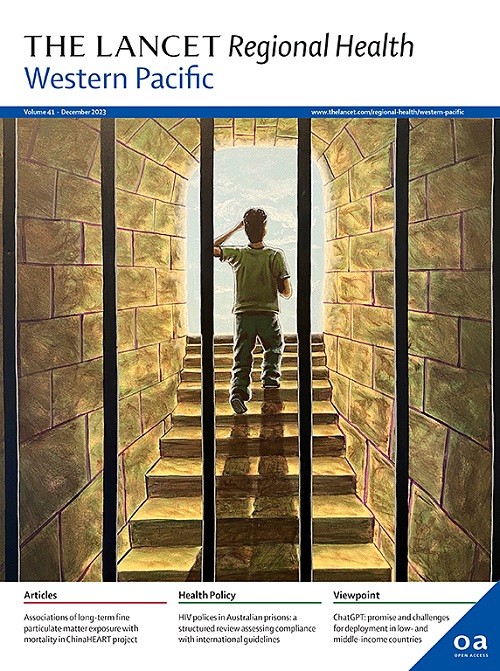靶向免疫治疗肝癌治疗后不良事件排序:基于风险概率评估的网络荟萃分析
IF 7.6
1区 医学
Q1 HEALTH CARE SCIENCES & SERVICES
引用次数: 0
摘要
背景采用靶向和免疫治疗药物治疗肝细胞癌(HCC)是一种关键的现代治疗方法。然而,在这些药物的疗效和对生存结果的影响方面,在详尽的研究中存在明显的差距。本系统综述和网络荟萃分析旨在评估不同靶向和免疫治疗干预引起的特异性不良反应的不同频率和严重程度。方法从PubMed、Embase、Web of Science、Cochrane Library等知名数据库中选取2008 - 2023年肝细胞癌(HCC)患者靶向治疗和免疫治疗方法的临床研究。这些选定的研究包括各种治疗方案。数据处理和评估遵循PRISMA指南,利用随机效应模型进行数据合成。由于所有纳入的研究均为随机对照试验(RCTs),因此偏倚评估采用Cochrane偏倚风险评估工具,并使用Revman 5.3软件进行评估。选择相对危险度(RR)作为比值比(OR)的效果度量,以便进行更适合研究结果特征的风险概率分析。为了保证模型的收敛性,研究人员绘制了轨迹图、密度图和Brooks-Gelman-Rubin诊断图,并计算了潜在尺度缩减因子(PSRF)。通过确定网络模型中直接和间接比较的I2来评估异质性。研究结果:对相关文献进行了细致的回顾,确定了13项随机对照试验(RCTs),涵盖13种肝细胞癌(HCC)的治疗方案,包括一线和选择性二线治疗。这项研究共纳入了10760名患者。首先,对同一类别的不良事件进行整合,然后依次构建网络模型,评估不同靶向免疫治疗方案的各种不良事件的风险概率,并建立优先级排序。系统评价的主要结果包括38种不良反应,根据国家癌症研究所不良事件通用术语标准5.0 (CTCAE 5.0)对严重程度进行分级。并对28种免疫检查点抑制剂相关不良事件进行统计分析,综合分析每种药物的风险概率。cabozantinib、camrelizumab及其联合治疗肝细胞癌(HCC)与普遍不良反应发生率升高有关。这些反应包括转氨酶水平升高、疲劳、腹泻、食欲减退、恶心、甲状腺功能障碍、高血压、皮疹、手掌-足底红肿综合征和脱发。相比之下,durvalumab、lenvatinib和它们的联合治疗不太容易引起常见的不良反应。本文章由计算机程序翻译,如有差异,请以英文原文为准。
Post-treatment adverse events ranking in targeted immunotherapy for hepatocellular carcinoma: a network meta-analysis based on risk probability assessment
Background
The adoption of targeted and immunotherapeutic drugs in the management of hepatocellular carcinoma (HCC) signifies a pivotal modern therapeutic approach. Nevertheless, a conspicuous gap exists in exhaustive research regarding the adverse effects of these medications in relation to their efficacy and influence on survival outcomes. This systematic review and network meta-analysis aim to assess the diverse frequencies and severities of specific adverse reactions induced by different targeted and immunotherapy interventions.
Methods
Clinical studies on targeted therapies and immunotherapeutic approaches in hepatocellular carcinoma (HCC) patients were selected from reputable databases including PubMed, Embase, Web of Science, and the Cochrane Library, covering the period from 2008 to 2023. These chosen studies encompassed a variety of treatment regimens. Data processing and evaluation adhered to PRISMA guidelines, utilizing a random-effects model for data synthesis. As all included studies were randomized controlled trials (RCTs), bias assessment followed the Cochrane Risk of Bias Assessment Tool and was assessed using Revman 5.3 software. The Relative Risk (RR) was selected as the effect measure over Odds Ratio (OR) to enable a risk probability analysis that better suited the characteristics of the research findings. To ensure model convergence, researchers generated trajectory plots, density plots, and Brooks-Gelman-Rubin diagnostic plots, and calculated the Potential Scale Reduction Factor (PSRF). Heterogeneity was evaluated by determining the I2 for both direct and indirect comparisons within the network model.
Findings
A meticulous review of pertinent literature was conducted, identifying 13 Randomized Controlled Trials (RCTs) covering 13 treatment protocols for hepatocellular carcinoma (HCC), including first-line and select second-line therapies. This study encompassed a total of 10,760 patients. Initially, adverse events within the same category were consolidated, followed by the sequential construction of a network model to evaluate the risk probabilities associated with various adverse events of different targeted immunotherapy regimens and establish priority rankings. The primary outcomes of the systematic evaluation included 38 types of adverse reactions, graded for severity based on the National Cancer Institute Common Terminology Criteria for Adverse Events 5.0 (CTCAE 5.0). Additionally, statistical analysis was conducted on adverse events related to 28 immune checkpoint inhibitors, with each analyzed comprehensively to assess the risk probability of the corresponding drugs.
Interpretation
Cabozantinib, camrelizumab, and their combination therapy for hepatocellular carcinoma (HCC) are linked to an elevated occurrence of prevalent adverse reactions. These reactions encompass elevated aminotransferase levels, fatigue, diarrhea, reduced appetite, nausea, thyroid dysfunction, hypertension, rash, palmar-plantar erythrodysaesthesia syndrome, and alopecia. In contrast, durvalumab, lenvatinib, and their combined therapy are less prone to induce common adverse effects.
求助全文
通过发布文献求助,成功后即可免费获取论文全文。
去求助
来源期刊

The Lancet Regional Health: Western Pacific
Medicine-Pediatrics, Perinatology and Child Health
CiteScore
8.80
自引率
2.80%
发文量
305
审稿时长
11 weeks
期刊介绍:
The Lancet Regional Health – Western Pacific, a gold open access journal, is an integral part of The Lancet's global initiative advocating for healthcare quality and access worldwide. It aims to advance clinical practice and health policy in the Western Pacific region, contributing to enhanced health outcomes. The journal publishes high-quality original research shedding light on clinical practice and health policy in the region. It also includes reviews, commentaries, and opinion pieces covering diverse regional health topics, such as infectious diseases, non-communicable diseases, child and adolescent health, maternal and reproductive health, aging health, mental health, the health workforce and systems, and health policy.
 求助内容:
求助内容: 应助结果提醒方式:
应助结果提醒方式:


